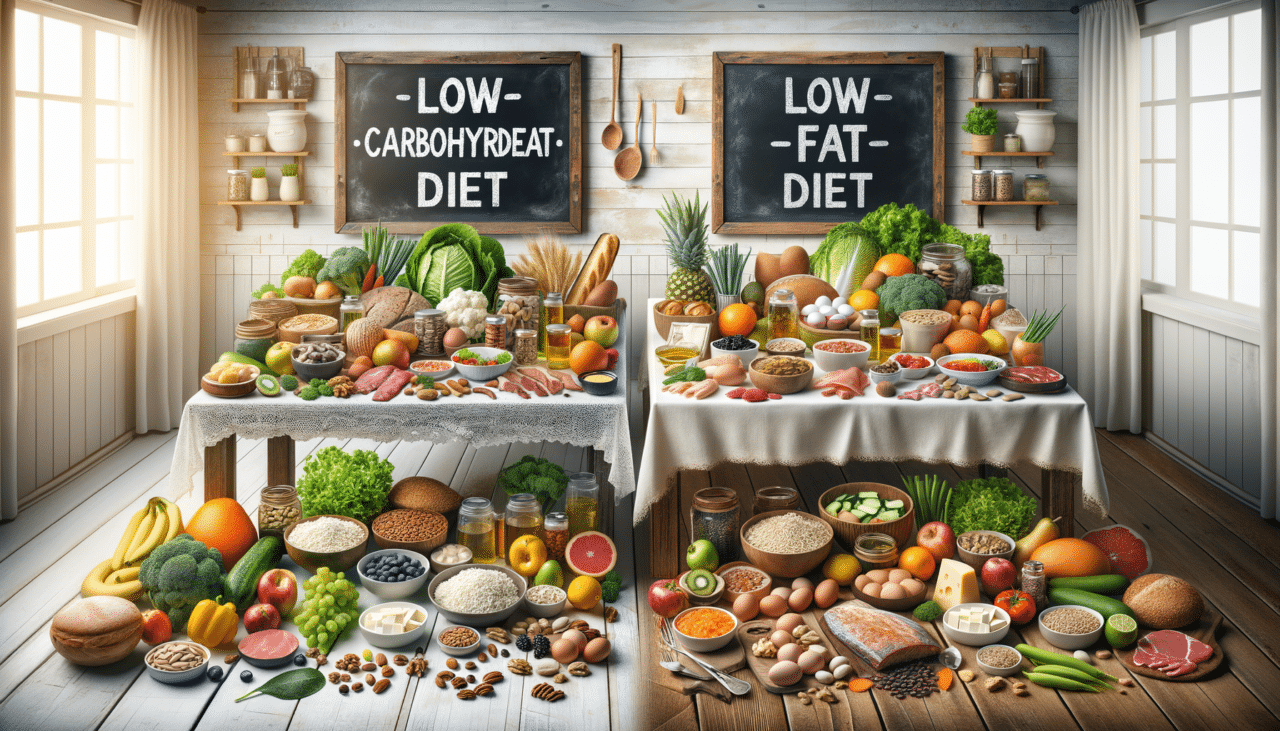In the ever-evolving landscape of dietary trends, two approaches consistently garner attention: the Low-Carbohydrate Diet and the Low-Fat Diet. Each has its own philosophy, benefits, and challenges, making the choice between them a matter of personal preference and health goals. In this article, we delve deep into the nuances of these two popular diets, providing you with a comprehensive comparison to help guide your decision-making process.
Understanding the Basics
Low-Carbohydrate Diet
A Low-Carbohydrate Diet emphasizes reducing the intake of carbohydrates, which are found in foods like bread, pasta, and sugar. Instead, it focuses on increasing the consumption of protein and healthy fats. The primary goal is to shift the body’s metabolism from burning glucose (derived from carbs) to burning stored fat for energy, a state known as ketosis.
Characteristics:
– Carbohydrate Intake: Typically less than 20-50 grams per day
– Foods to Emphasize: Meats, fish, eggs, nuts, seeds, non-starchy vegetables
– Foods to Limit: Bread, pasta, rice, sugary snacks, starchy vegetables
– Key Health Impact: Promotes weight loss and improves blood sugar control
– Potential Downsides: Risk of nutrient deficiency, increased cholesterol levels
Low-Fat Diet
A Low-Fat Diet focuses on reducing the intake of fats, particularly saturated fats, while allowing for a higher intake of carbohydrates and proteins. This diet is often pursued to lower cholesterol levels and reduce the risk of heart disease.
Characteristics:
– Fat Intake: Typically no more than 20-30% of total daily calories
– Foods to Emphasize: Fruits, vegetables, whole grains, lean proteins
– Foods to Limit: Red meats, full-fat dairy products, fried foods
– Key Health Impact: Supports heart health and weight management
– Potential Downsides: May not be as effective for weight loss as low-carb diets, potential increase in triglycerides
Comparative Table: Low-Carbohydrate Diet vs. Low-Fat Diet
| Feature | Low-Carbohydrate Diet | Low-Fat Diet |
|---|---|---|
| Primary Focus | Reduce carbs, increase protein and fats | Reduce fat, increase carbs and proteins |
| Caloric Distribution | High in fats (60-70%), moderate in protein (20-30%) | Low in fats (20-30%), high in carbs (50-60%) |
| Typical Foods | Meats, fish, eggs, nuts, low-carb veggies | Fruits, vegetables, whole grains, lean proteins |
| Weight Loss | Rapid initial weight loss | Steady, gradual weight loss |
| Heart Health | May increase cholesterol in some individuals | Generally supports heart health |
| Blood Sugar Control | Highly effective | Less effective |
| Sustainability | May be difficult to maintain long-term | Easier to maintain long-term |
| Nutrient Intake | Risk of deficiency in certain vitamins/minerals | Generally balanced |
| Common Side Effects | Keto flu, constipation | Possible hunger and cravings |
Making the Right Choice
Choosing between a Low-Carbohydrate and a Low-Fat Diet depends on your individual health goals, lifestyle, and dietary preferences. Here are some considerations to keep in mind:
- Weight Loss: If rapid weight loss is your primary goal, a Low-Carbohydrate Diet may be more effective. However, it requires careful planning to ensure nutritional balance.
- Heart Health: If reducing cholesterol and improving heart health are top priorities, a Low-Fat Diet could be more suitable.
- Sustainability: Consider which diet you can maintain long-term. A sustainable diet is more likely to result in lasting health benefits.
- Medical Conditions: Consult with a healthcare provider, especially if you have conditions like diabetes or high cholesterol, to determine the best diet for your needs.
Conclusion
Both the Low-Carbohydrate and Low-Fat Diets offer unique benefits and challenges. By understanding their distinct characteristics and health impacts, you can make an informed decision that aligns with your lifestyle and health objectives. Remember, the best diet is one that not only helps you achieve your goals but is also sustainable and enjoyable in the long run.

Comments (0)
There are no comments here yet, you can be the first!